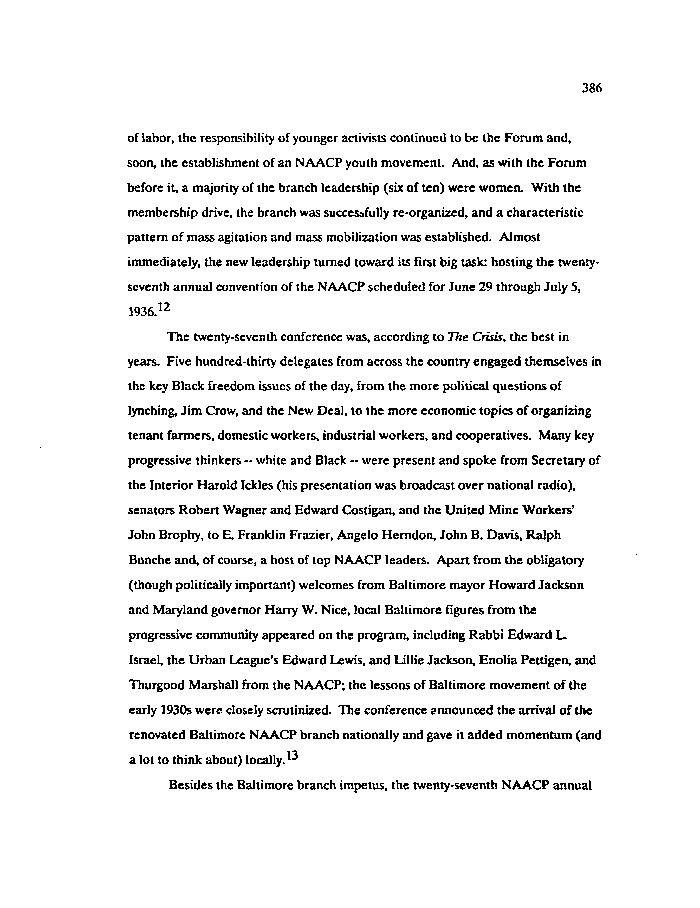|
386
of labor, the responsibility of younger activists continued to be the Forum and,
soon, the establishment of an NAACP youth movement. And, as with the Forum
before it, a majority of the branch leadership (six of ten) were women. With the
membership drive, the branch was successfully re-organized, and a characteristic
pattern of mass agitation and mass mobilization was established. Almost
immediately, the new leadership turned toward its first big task: hosting the twenty-
seventh annual convention of the NAACP scheduled for June 29 through July 5,
1936.12
The twenty-seventh conference was, according to The Crisis, the best in
years. Five hundred-thirty delegates from across the country engaged themselves in
the key Black freedom issues of the day, from the more political questions of
lynching, Jim Crow, and the New Deal, to the more economic topics of organizing
tenant farmers, domestic workers, industrial workers, and cooperatives. Many key
progressive thinkers — white and Black — were present and spoke from Secretary of
the Interior Harold IckJes (his presentation was broadcast over national radio),
senators Robert Wagner and Edward Costigan, and the United Mine Workers'
John Brophy, to E. Franklin Frazier, Angelo Herndon, John B. Davis, Ralph
Bunche and, of course, a host of top NAACP leaders. Apart from the obligatory
(though politically important) welcomes from Baltimore mayor Howard Jackson
and Maryland governor Harry W. Nice, local Baltimore figures from the
progressive community appeared on the program, including Rabbi Edward L.
Israel, the Urban League's Edward Lewis, and LJllie Jackson, Enolia Pettigen, and
Thurgood Marshall from the NAACP; the lessons of Baltimore movement of the
early 1930s were closely scrutinized. The conference announced the arrival of the
renovated Baltimore NAACP branch nationally and gave it added momentum (and
a lot to think about) locally.13
Besides the Baltimore branch impetus, the twenty-seventh NAACP annual
|

